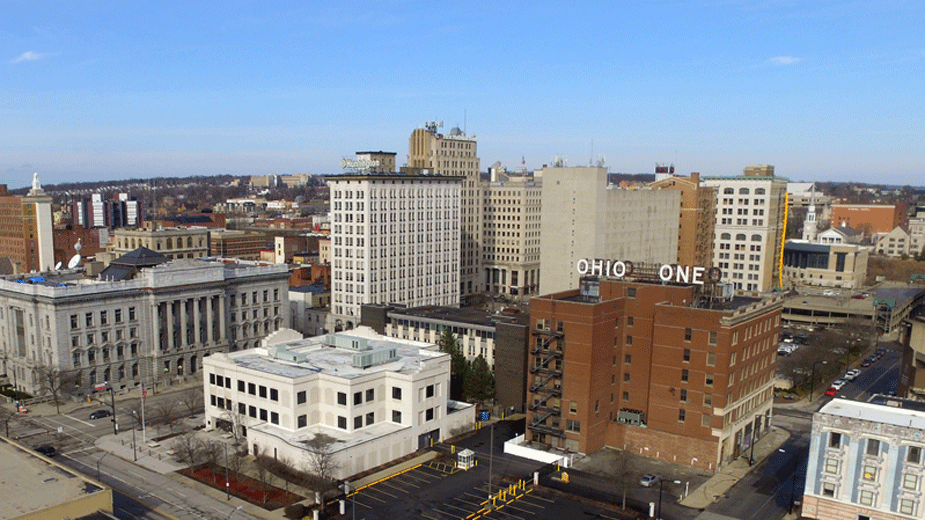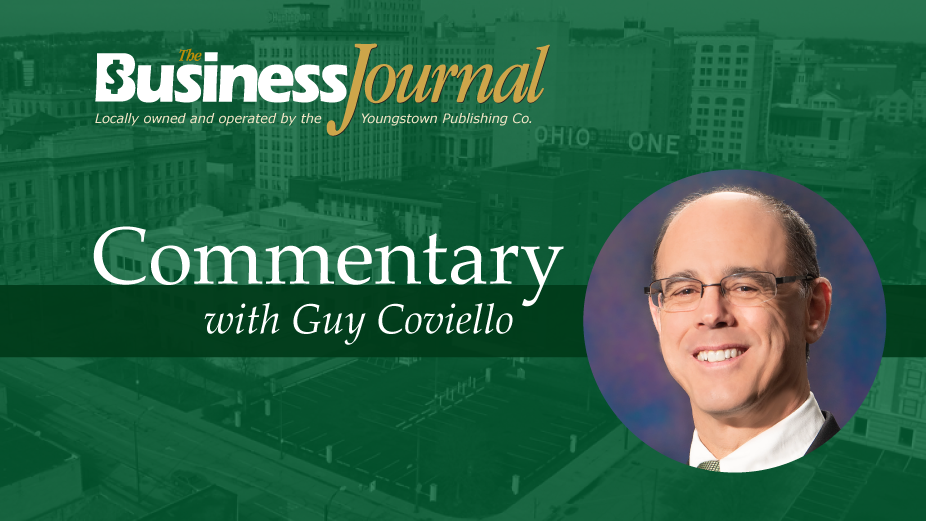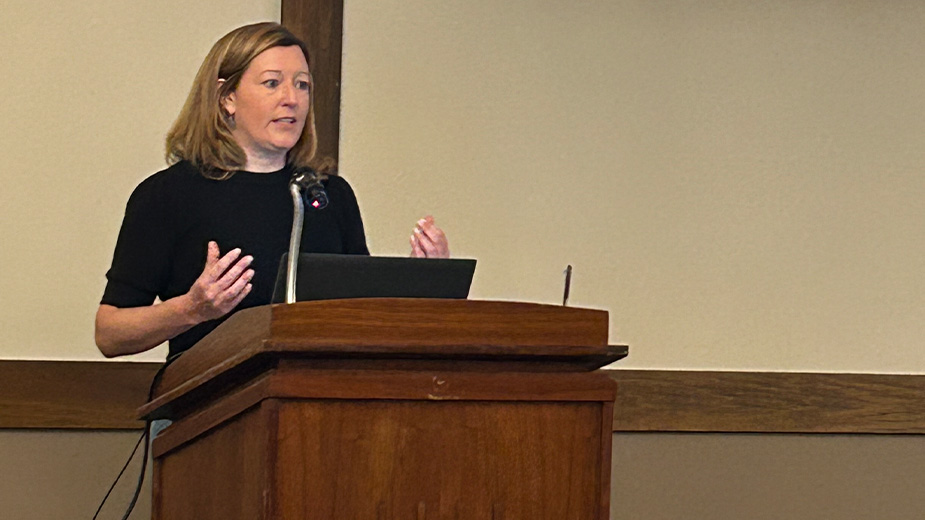Opportunity Zones a New Tool for Development Agencies
YOUNGSTOWN, Ohio – Public and private entities engaged in economic development are eagerly anticipating the new federal Opportunity Zones as a tool to enhance available incentives.
The state of Ohio chose 15 census tracts in the Mahoning Valley and the commonwealth of Pennsylvania chose six in Mercer and Lawrence counties. The program allows taxpayers to defer any tax owed on capital gains by investing the realized gain in the Opportunity Zone, which are in low-income census tracts.
Rules are still being completed for the program, approved as part of the Tax Cuts and Jobs Act passed in 2017.
“It’s designed to attract equity investment into eligible communities,” says Lauren Johnson, business development manager for the Youngstown/Warren Regional Chamber.
The 15 tracks in Mahoning and Trumbull counties are primarily along the Mahoning River, Johnson says. The chamber has received a handful of inquiries from developers interested in projects in those areas.
“We’re definitely seeing a lot of interest,” she says. “One of the things we’re working on now is putting together a marketing prospectus that would include information on all of the zones designated in the Valley. And we anticipate rolling that out in May or June.”
The Regional Chamber already uses a variety of tools to help companies looking to locate or expand here, says Sarah Boyarko, chief operating officer. These include research on local supply chains and materials, help finding and selecting a site in partnership with Team NEO and JobsOhio and coordinating help offered by local, state and federal government.
“The knowledge that we have internally to understand what programs are complementary to a company’s investment, as well as what programs can and can’t be used together, is helpful,” Boyarko says. She makes it a point to mention data collection by the chamber as helping to convince the Ellwood Group to build its $60 million aluminum slab and billet plant in Hubbard Township.
Additionally, through its JobsNow initiative, the chamber matches companies with prospective employees and offers drug screening at no cost to the employer through Steward WorkMed.
Also gathering information on how the Opportunity Zones will affect communities is the Western Reserve Port Authority.
“Everyone believes it’s got the potential to be a game changer for our communities in those zones,” says Anthony Trevena, director of the Northeast Ohio Development and Finance Authority of the port authority.
Among the development tools the port authority uses is its ability to hold and transfer property for developers to help put underperforming buildings and sites into productive use. “We can work directly with developers for economic development or improvements to the community,” Trevena says.
In 2017, the port authority and the city of Warren entered into an agreement to market, hold and transfer specific properties, a deal that allowed Downtown Development Group to acquire the former Warren Scope senior center, which is being converted into a winery. It also worked with Youngstown Neighborhood Development Corp. to revitalize a building on Glenwood Avenue.
Additionally, the port authority offers bond financing, tax-increment financing and capital leases as incentives. Projects aided under the capital-lease program include the DoubleTree by Hilton Youngstown Downtown hotel, which opened last year.
The Mahoning Valley Economic Development Corp., based in Liberty Township, serves eight counties that include the five-county northeastern Ohio-western Pennsylvania region. Although MVEDC leases real estate in its two business parks and owns short line railroads, the primary driver of the organization is its small-business lending, says Executive Director Mike Conway.
“Right now our lending activity is our most robust tool,” Conway says.
MVEDC has a loan portfolio of about $35 million among nearly 300 borrowers. It administers the U.S. Small Business Administration 504 Loan program as well as six revolving loan funds, each funded by a different agency and carrying its own set of rules, Conway says.
Recently, MVEDC collaborated with Youngstown Business Incubator, Youngstown State University and Mercy Health to offer venture-capital financing to early-stage, technology-based companies through Valley Growth Ventures. In addition to being a partner in the fund, MVEDC houses its back-office operations.
“It’s essentially a different way of investing in a company,” Conway says.
Traditionally, MVEDC has offered financing for bricks and mortar, “but if we’re looking to develop higher-tech companies, firms that don’t have a vast array of collaterizable assets, we need to invest in those companies in a different way,” he says.
A primary incentive Pennsylvania offers is its Keystone Opportunity Expansion Zone program. Among the benefits is abatement of real estate taxes, says Brad Gosser, executive director of Greenville-Reynolds Development Corp.
“You also pay no corporate state income tax,” he adds, “and in many cases there is no state sales tax related to construction of a facility.”
Greenville-Reynolds has about 650 acres available in its Reynolds East Business Park, priced between $13,000 and $16,000 per acre, and graduated tax abatements for a term of five years, he says. And the corporation offers a revolving-loan fund of up to $250,000 per project.
At Penn-Northwest Development Corp. in Sharon, Pa., “we use quite an array of different tools,” says Gary Dovey, vice president of business development. One of the most attractive is the Pennsylvania Industrial Development Revolving Loan Fund, which offers a 3.75% fixed rate for buildings and a 2.75% rate for equipment. “Those are very attractive rates for renovating a building or purchasing a building,” he says.
Other tools include the Pennsylvania First program, a loan and grant program tied to job creation, the Redevelopment Assistance Capital program used to help the Hope Center for Arts & Technology in Sharon, and a state job-creation tax credit.
Other tools include the Shenango Valley Enterprise Zone Revolving Loan Fund, which provides loans of up to $250,000, and the Mercer County Industrial Growth Fund of Penn-Northwest. Financing programs also are offered through the Mercer County Industrial Development Authority and the Shenango Valley Industrial Development Corp., Dovey says.
The cities of Sharon and Farrell have their own industrial development authorities that offer financing.
The Opportunity Zone program will provide new funding opportunities for local development, predicts Linda Nitch, director of economic development for the Lawrence County Regional Chamber of Commerce.
Larger banks have established funds to invest in Opportunity Zone tracts – of which Lawrence County has four – to hopefully spur development, she says.
Three tracts are on the southern side of New Castle, Pa. “That takes in the commercial corridor, a lot of the industrial corridor, and then it goes out to Cascade Park,” Nitch says. “We have to look for developers, bankers, real estate agents who might know of opportunities within these designated areas so they can promote it and we find projects that can be done.”
Another opportunity for Lawrence County is the federal New Market Tax Credit program. West Virginia-based WesBanco Bank Community Development Corp. received tax credits from the Community Development Financial Institutions Fund of the U.S. Department of the Treasury that total $40 million of investment.
New Castle is one of the areas it is targeting for low-interest loans to spur development and job creation using the credits, Nitch says. The city received a $200,000 brownfield-assessment grant from the U.S. Environmental Protection Agency to study potential contamination at the site of the former Shenango China plant as it attempts to buy the building and land.
Youngstown and Warren have census tracts that are Opportunity Zone properties, and both have received inquiries about the program.
So far the calls are just general inquiries unattached to any ready-to-go projects, says T. Sharon Woodberry, director of community planning and economic development for Youngstown.
Although she is unaware of any investment funds being formed to specifically capitalize on the program in the city, Woodberry is looking at funds being established outside the area that could apply.
“We do feel that this is a great tool that could complement some of the incentives the city has,” she says. Those include city tax-abatement programs, float loans – which are particularly useful for construction projects – façade-improvement programs and block grants in targeted areas. In particular, the city wants to encourage investment along its major corridors and in neighborhoods.
“There has been more interest in market demand for downtown, but we want to make sure they’re looking at the entire area,” she says.
Mike Keys, Warren community development director, says he’s received inquiries about the Opportunity Zones as well. In Warren, the five designated tracts are “right down the center of the city,” he reports. Among the sections the program covers is the property where Christopher Alan, CEO of AutoParkIt LLC, plans to build his new headquarters and manufacturing plant.
Other tools Warren offers include a corporate income-tax credit based on the level of investment, total payroll and employment, Keys says. The city also offers property-tax abatements and a separate tax credit through a Community Reinvestment Area designation. And the city offers façade grants that cover exterior improvements, as well as low-interest loans.
To help entrepreneurs, the Sustainable Opportunity Development Center in Salem has “a great partnership” with the Ohio Small Business Development Center, which has space in the SOD office, reports Julie Needs, executive director. The center has a dedicated office space for people who operate home-based businesses or do e-commerce to meet with clients.
To help existing companies, the center can connect them with resources and incentives through its partnerships with development agencies and governments. The center maintains an inventory of commercial and industrial listings and can connect a company to a real estate agent or the owner of a site. Additionally, a training center is available for companies to use.
“If there’s a class they need, we find that training for them,” she says. In some cases, several companies attend the same training session to share costs.
Copyright 2024 The Business Journal, Youngstown, Ohio.



